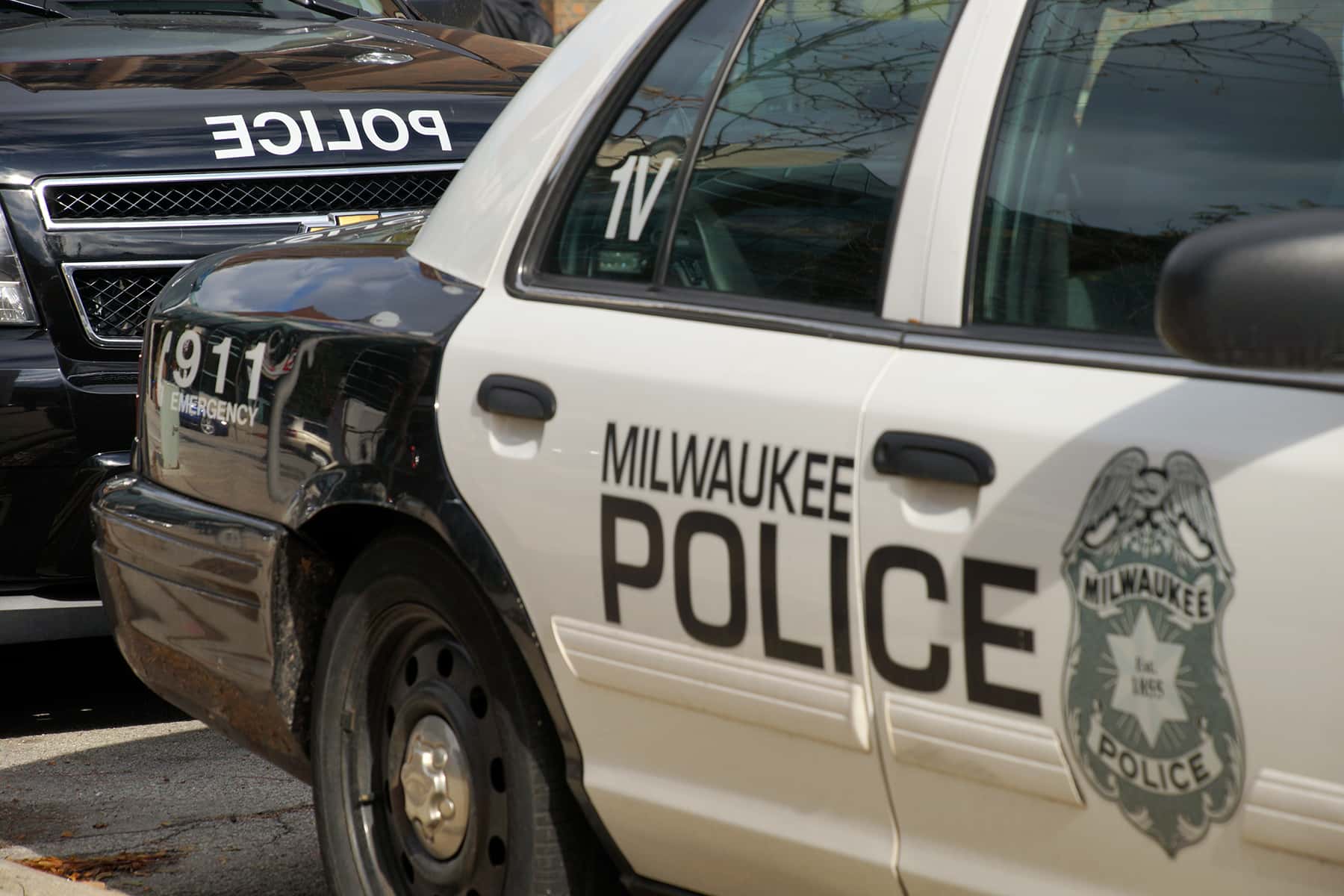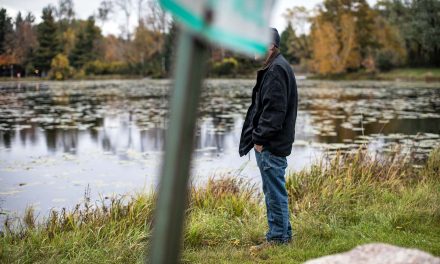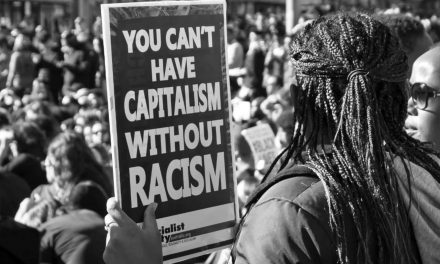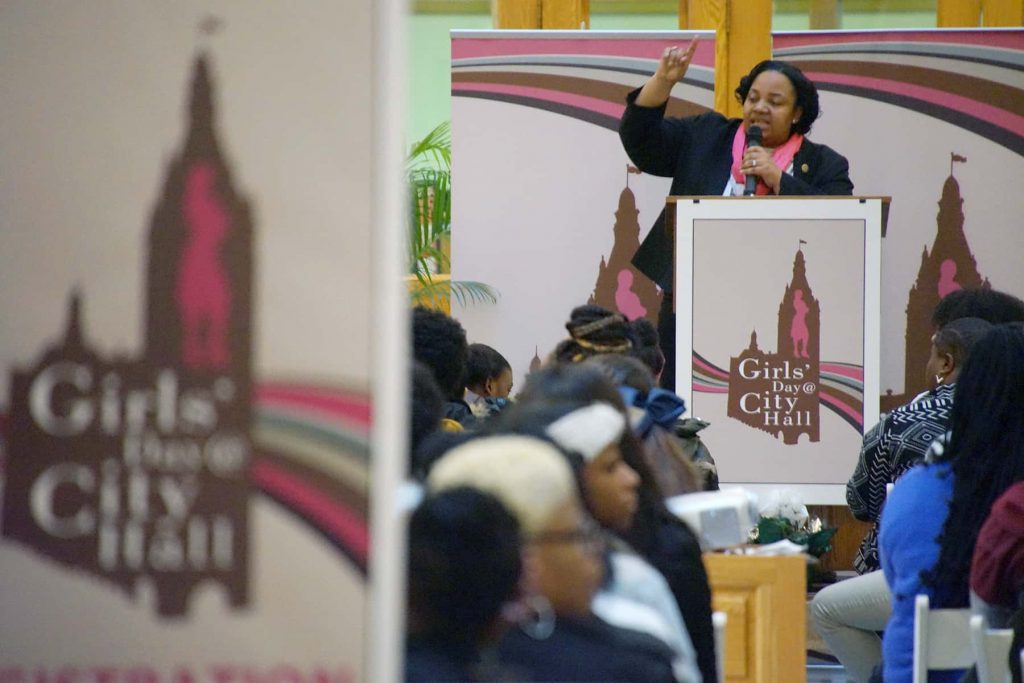
Wisconsin police departments were already struggling to draw and keep officers, and calls for accountability have made it even harder.
Like many people across the country, Lauren Phillips remembers watching the murder trial of former Minneapolis Police Officer Derek Chauvin. She and her police academy classmates in Eau Claire waited for a verdict in silence, hoping justice would be served and that Chauvin would be held accountable.
“Everyone was anxious. Everyone was hoping that the right thing would come about,” said Phillips. “But, at the same time, we’re all sitting there, like, what happens if this goes south? We were still recruits in the academy, but we still wore shirts that said ‘CVTC law enforcement.'”
Phillips said she and fellow students would change their shirts or grab a jacket before going out in public, worried that the label “law enforcement” would attract negative attention.
Officers have faced intense outrage and criticism since Chauvin killed George Floyd last May, igniting worldwide protests. The negative attitudes toward police didn’t sway Phillips from pursuing the career. Now on patrol for Superior police, she wants to bring more empathy to police encounters with community members.
“I can still respect them,” said Phillips. “And, I can still take what I learned from them, and the education that law enforcement gives me and bring that to my community.”
But, it is getting harder to attract people like Phillips to a career in policing. Superior Police Chief Nick Alexander said he received around 48 applicants last year — less than half the applications he received in the first few years after he became chief in 2015.
Wisconsin law enforcement agencies have had difficulty recruiting and keeping officers for years. Last year’s national reckoning over racial justice and calls for police reform only added to agencies’ struggles. The pandemic, rising violence and intense scrutiny of police have made it all the more challenging to attract and keep officers.
Hiring drops while retirements and resignations rise
A national survey of nearly 200 police departments by the Police Executive Research Forum found hiring dropped by 5 percent while retirements rose 45 percent and resignations climbed by 18 percent from April of last year to this spring.
“There are more options for younger people today that pay better and don’t require them to put their lives and personal safety risk, and they don’t carry that significant enhanced scrutiny,” said Jim Palmer, executive director of the Wisconsin Professional Police Association.
It’s difficult to get a clear picture of how many officers are leaving the profession in Wisconsin. Federal employment estimates for local police and sheriff’s agencies show the state had 10,290 officers through May of last year — a decline of nearly 7 percent or 740 workers from the previous year.
Professor Peter Moskos, with the John Jay College of Criminal Justice, said he thinks staffing challenges over the last year are more localized.
“In the cities that have had protests and issues, there have been an outflow of officers from those departments,” said Moskos.
Massive protests unfolded in the state’s largest cities last year with community organizers calling on leaders to defund the police departments in Milwaukee and Madison. In Milwaukee, the department’s officers have been involved in multiple fatal encounters with Black community members, including the 2014 shooting death of Dontre Hamilton and 2016 death of Sylville Smith. One month prior to George Floyd’s murder, Joel Acevedo died after an off-duty Milwaukee police officer put him in a chokehold for more than 11 minutes. City residents gave police low marks for their performance in a poll this past summer.
Retirements at the Milwaukee Police Department spiked nearly 40 percent last year with 131 officers calling it a career. In the last five years, more than 500 Milwaukee officers have retired. In a recent interview with the Milwaukee Fire and Police Commission, acting Milwaukee Police Chief Jeffrey Norman said the loss of officers is a challenge.
“We need to have, again, something that we have not had in a long time — a consistency of a transition of when those particular type of individuals move on, are we able to continue to lift without having a blip on the radar,” said Norman.
The Milwaukee Police Academy has graduated fewer recruits in recent years, and the city cut 120 police officers last year through attrition due to budget constraints. Under next year’s budget, Milwaukee Mayor Tom Barrett is proposing to use $6 million from the American Rescue Plan Act to train 195 new officers.
“While 2022 will be a busy year at the (Milwaukee Police Academy), overall, the total strength of the department will be on average 1,657 — not quite keeping pace with retirements,” said Barrett during his budget address.
Data from the city’s Legislative Reference Bureau shows 97 officers have retired so far this year, and 557 officers will be eligible to retire over the next five years.
Barrett’s proposed budget for police is also smaller, but Milwaukee’s outgoing mayor said that’s driven by financial constraints as state aid for the city has remained flat.
A recent Wisconsin Policy Forum report found communities across the state were cutting police spending or staffing prior to calls to defund police due to declining state aid and strict limits on raising revenue through property taxes. The forum analyzed the most recent FBI data from 2018 to 2019 that showed 59 municipal departments in the state cut officers while 79 agencies increased staffing.
Palmer, of the Wisconsin Professional Police Association, said he thinks the defund movement and any associated reductions in funding and staffing harms law enforcement’s ability to respond and invest in initiatives like community policing, which he says is crucial to building trust between officers and community members.
Meghan Stroshine, associate professor of criminology and law studies at Marquette University, said more community policing would be a step in the right direction.
“If we can improve the relationship between the police and the public, policing will become a more attractive position,” said Stroshine.
Markasa Tucker-Harris, executive director of the African American Roundtable, said she doesn’t think there’s anything Milwaukee police could do to make things better for the community besides giving up their badges. The coalition, which serves the city’s Black residents, has been pushing for cuts to police budgets. She wants taxpayer money shifted away from law enforcement to support housing assistance and other programs to address the root causes of poverty and violence.
“What we do know is what we’ve been doing isn’t working, and we can’t continue to waste money,” said Tucker-Harris. “We can’t continue to allow lives to continue to be destroyed and lost.”
The number of homicides had been falling in recent years across Milwaukee, but killings spiked during the pandemic last year with a record 190 homicides. The city is on track to break that record this year as police staffing in Milwaukee hits a record 20-year low. But Tucker-Harris is skeptical that more officers would translate to safer neighborhoods.
Applications to Madison Police Department drop in 2020
The Madison Police Department received 288 applicants for this year’s recruit class — down 43.5 percent from the previous year. Madison Police Sgt. Theresa Magyera said the COVID-19 pandemic affected their ability to draw students when campuses transitioned to online learning last year.
Madison Police Chief Shon Barnes said retirements and resignations have been largely the same as previous years. Although, retirements inched upward in 2020, and more officers have already resigned this year than last.
“I’ve heard everything from ‘I don’t feel supported by the rest of the criminal justice system,’ to ‘this job has caused undue stress on my mental health, and I think it’s best that I leave,'” said Barnes.
Barnes said morale is difficult to gauge, but the department has implemented mental health days for officers this year. They were also able to take vacation this year after struggling to maintain staffing amid protests and COVID-19 quarantines last year. Madison’s police chief said he’s open to conversations about changing schedules for officers if they can maintain the same level of service.
Madison Mayor Satya Rhodes-Conway is proposing a slight increase in police funding next year that would support a new police reform and innovation director position, as well as more recruits to provide service as part of annexing the Town of Madison.
Brandi Grayson, founder and CEO of Urban Triage, said the increase of officers and funding misses the mark and relies on the idea that police are the solution to social problems.
“We need social workers. We need mental wellness. We need housing. We need solutions to poverty,” said Grayson. “They will say that. Our chief of police has said that — both of them, the present and the past one. And, yet no one advocates or stands on the side of the people when it’s time for budget conversations.”
When it comes to police reform, Palmer thinks the state has made tremendous strides in the last year as lawmakers passed bills that ban police chokeholds except in life-or-death situations, establish a uniform use-of-force policy for departments statewide, and require publishing use-of-force incidents and posting related policies online. But, he acknowledges there’s more work to be done to strengthen relations between communities and police.
Superior’s Phillips is hopeful that officers can work with residents to address problems facing the community.
“Instead of being that opposite force, we can work with (the community) to just be an entire union,” she said.
Danielle Kaeding
Lee Matz














